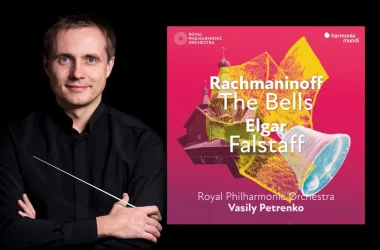This is not the first version of the Schumann Violin Sonatas played on period instruments, with previous attempts including distinguished artists such as Daniel Sepec and Andreas Staier, Fabio Biondi and Luigi Di Llio, with other versions released in the past 20 years or so. In this version, Violinist Eriikka Maalismaa and pianist Emil Homlström perform on an Anselmo Bellosio violin from 1770 with gut strings and an Érard piano from 1862.

The album is opened with the more dramatic second sonata, the “period” balance immediately apparent, with the bombastic opening chords sounding wonderfully blended together. A too caution approach can ruin the effect here, as heard with many duos afraid to be overcome by the modern piano, and here the duo exemplifies the advantages of using these instruments.
The second movement, too heavy in the Biondi/Stair version, is charged through with tremendous energy, which seems to suit the intention of the composer better. The quiet pizzicatos that open the slow movement (track 3) form an intricate dialogue with the piano, with transparency rarely heard on other versions. Both artists show superb control, allowing themselves to play freely, taking the special dynamic qualities of their perspective instruments.
Instruments aside, there is the interpretations themselves. The second sonata, as can already be concluded, is nicely done indeed. The First Sonata, and especially the first movement, was better presented with the same amount of enthusiasm. There is a certain circular, almost compulsive element to the first movement which is here a bit soften by the atmospheric pauses.
Again, nothing wrong with the balance and high level of performance of Maalismaa and Homlström, with the latter showing special affinity to the difficult piano part. The second movement fairs much better, with what sounds like a perfect “Allegretto” – not too cheerful, not too sluggish. The result is a somewhat reflective mood that leads to one of Schumann’s most beautiful melodies – the pianissimo segment at 1:00 (track 6). This was the episode so moving in Christian Tetzlaff and Lars Vogt’s modern-instruments version, and here it is no less successful.

With the posthumous Third Sonata, we return to the atmosphere of the Second which we’ve opened with. It’s a dedicated performance, and taking into account the somewhat sketchy musical sources, the duo manages to give a cohesive account of this elusive work.
Compared to other attempts, this is one of the better accounts of the sonatas on period instruments, more natural and flowing than the pointed Sepec/Staier or to the sometimes too-edgy Biondi/Di Llio. From modern instruments versions, Tetzlaff and Vogt are still a must for anyone who loves this repertoire, and Kremer with Argerich on Deutsche Grammophon is a dramatic, almost hectic alternative. This lovely new version is one you would want to return to, with new elements exemplify themselves with each hearing. Nice, opened yet detailed recording, and interesting booklet articles by the performers. Recommended.
Schumann – Complete Violin Sonatas
Eriikka Maalismaa – Violin
Emil Homlström – Piano (Érard)
Alba Records, CD ABCD 438

Top image: ©️ Maarit Kytöharju and Alba Records















